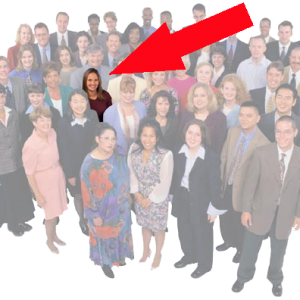Using Facebook To Advertise Now That The Algorithm Dust Has Settled
Digital advertising is expected to be bigger than ever in 2018. A recent study reported that advertising on Facebook will control 28.3 percent of the digital ad market share in 2018. Only Goog le will have a larger share at 34 percent. It is, however, truly a duopoly of these two giants, because the next closest share, held by Microsoft and Verizon combined are projected to receive only 4.3% of the digital spend. Even YP, which used to be a digital contender is predicted to slip to just 1.2 percent this year. With 1.95 billion active monthly users globally, Facebook ads currently reach 89 percent of targeted users.
le will have a larger share at 34 percent. It is, however, truly a duopoly of these two giants, because the next closest share, held by Microsoft and Verizon combined are projected to receive only 4.3% of the digital spend. Even YP, which used to be a digital contender is predicted to slip to just 1.2 percent this year. With 1.95 billion active monthly users globally, Facebook ads currently reach 89 percent of targeted users.
So in light of the recent algorithm changes over in Mr. Zuckerberg’s backyard, how does one best take advantage of Facebook as an advertising medium? Let us count the ways.
Targeting
Advertising on Facebook is still one of the best and most efficient ways to hyper-target a specific audience. Facebook allows you to target based on any of or a combination of these options:
- Location: You can go beyond just home or work ZIP code: Target people who have recently visited a location or plan to visit a location. You can even target specific area codes.
- Demographics: This category covers everything from the basics (such as age, gender, and language) to the more advanced (such as politics, parenting status, type and length relationship, and education level).
- Behaviors: This category combines online behavior info based on actions taken on Facebook and Instagram with offline behavior data from trusted partners.
- Interests: From entertainment to shopping, beer making, beekeeping or surfing. You can also target people based on information in their profiles as well as pages and posts that they like.
- Life events: Target an audience by birthday, home purchase, the birth of a baby or any other life event.
- Customized audience: Find and target people who have similar interests to your target audience, a like-mindedness if you will, who have visited your website, or who are in a specified contact list.
Location
Obviously, one can single out certain geographies using Facebook. Zip codes and area codes are the simplest. But with geo-targeting today, it is possible to focus on a structure, a business or employer like a mall, a car dealership or employees at a hospital. You can also target people who recently visited say, an airport or a coffee shop. The possibilities are endless.
Demographics
Because Facebook users share their age, gender, and generation, it’s easy to target specific demographics. But you can also drill down to things like ethnic affinity and financial status.
Behaviors
Customer behavior is easy to target because Facebook sees consumer purchases, travel habits, mobile usage, charitable donations, even what automobile they drive and more.
Interests
User interests are usually tracked based on what they do on their Facebook account, what they like, what they share and who they spend their time with. Now, with the new algorithm, Facebook will be paying much more attention to what they say … and on which things they comment.
Life Events
Need to target expectant mothers? How about people about to retire, or those just entering the workforce after graduation? What about those suffering a bereavement or needing hospice? These are all life events that can be pinpointed through Facebook marketing.
Custom Audiences
Another hyper-targeted tool that Facebook offers is the Custom Audience feature. This useful option allows you create a custom audience based on things like website visitors, customer lists, and engagement. If you have or create a custom list, you can use audience insights to learn more about customers on your list.
Lookalike Audiences is another feature offered by Facebook that allows you to target “like-minded” users. If you have a list of hobby beer makers, for instance, you can find others interested in or that participate in that hobby. After you use the Custom Audience tool, the Lookalike Audiences tool will find common qualities among the audience and then find more people with similar qualities or who look alike.
NOTE! No matter how you target or drill down to your audience on Facebook, make sure your visual content is favorable. We can not stress enough how important it now that your Facebook ads are more visually inviting than ever. Good looking ads are more likely to get clicked on, remembered and shared. An ad that has color, humor or video is more likely to get clicked on than an ad that has simple text content. Visuals deliver a message quicker and easier than the written word can, and speed is essential in the soundbyte world of today.
Also, take advantage of a call-to-action or CTA on your Facebook ad. Always encourage people to act on the ad in some form, just like you would in traditional advertising. “Click,” “sign up” or “learn more” are all efficient calls to action that create interest in the consumer and provide a way for them to act.
Your ads must have an enticing value proposition. This is critically important for a successful Facebook ad. You need to give users a reason to pause, then hopefully click on your ad. Offering discounts on your ad may entice readers to take action, but here we need to add a cautionary note; Be careful with discounting. Consumers tend to get used to them and may only respond to your ads when you offer a discount. So either offer a discount only in exchange for something or simply offer something for free. A free white paper, a free gift with purchase or a free something to the first 100 people that claim it. Bottom line, people get used to discounts (and expect them next time) they do not expect something for free.
Finally, the ability to track leads by placing a trackable pixel in your Facebook ads is another clever tool that Facebook offers. A Facebook pixel is a piece of code that you place on the back end of your website. It allows you to run extremely targeted campaigns and tracks all the traffic your site gets. You can add “search” codes, “view content” codes, “add to cart” codes, “add to wishlist” codes and many more! There’s even a completely customizable event code available!
As Brands and publishers try to acclimate to Facebook’s new focus on ‘meaningful social interactions’ they will have an even greater need for professional social management, as users tend to comment more on content that sparks emotional reaction — good, bad or otherwise, and that is what Facebook is looking for.
If all these changes and options seem overwhelming, relax … we can take it from here. Just give ChartLocal a ring, or click on Contact Us above and somebody will be right with you to answer questions, offer solutions and most of all, show you how to reach more people, more times, for less money.
Paul Evans
Director, The Ad Buyer

